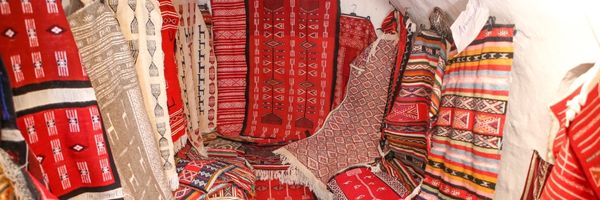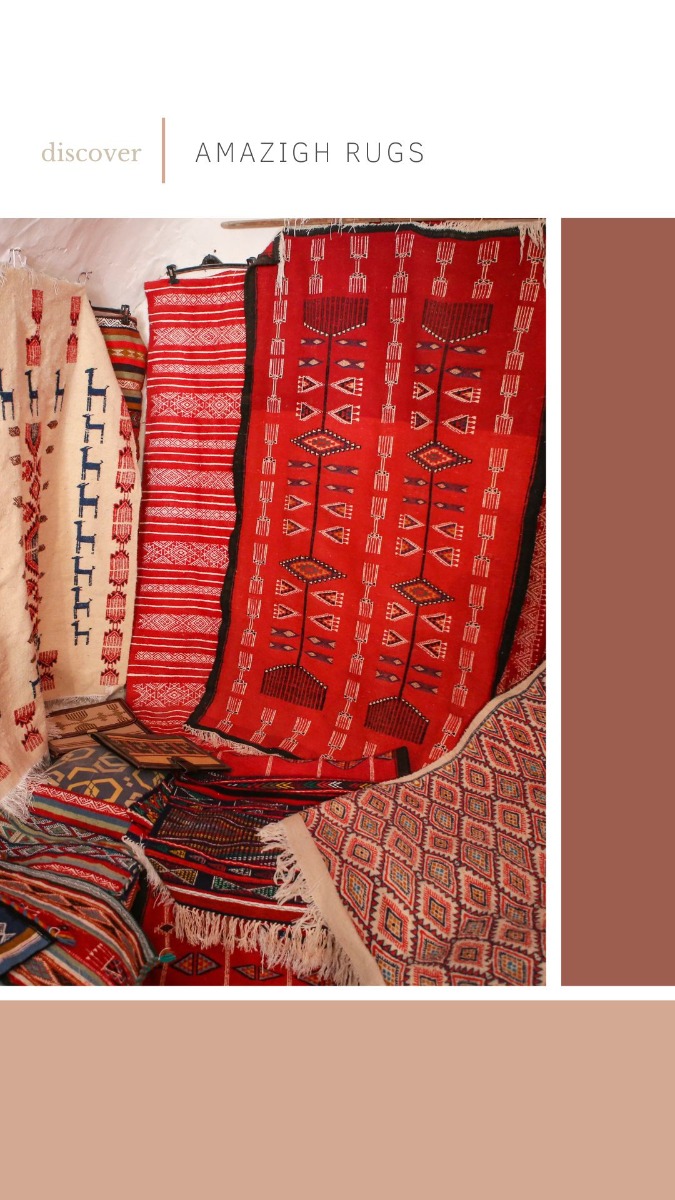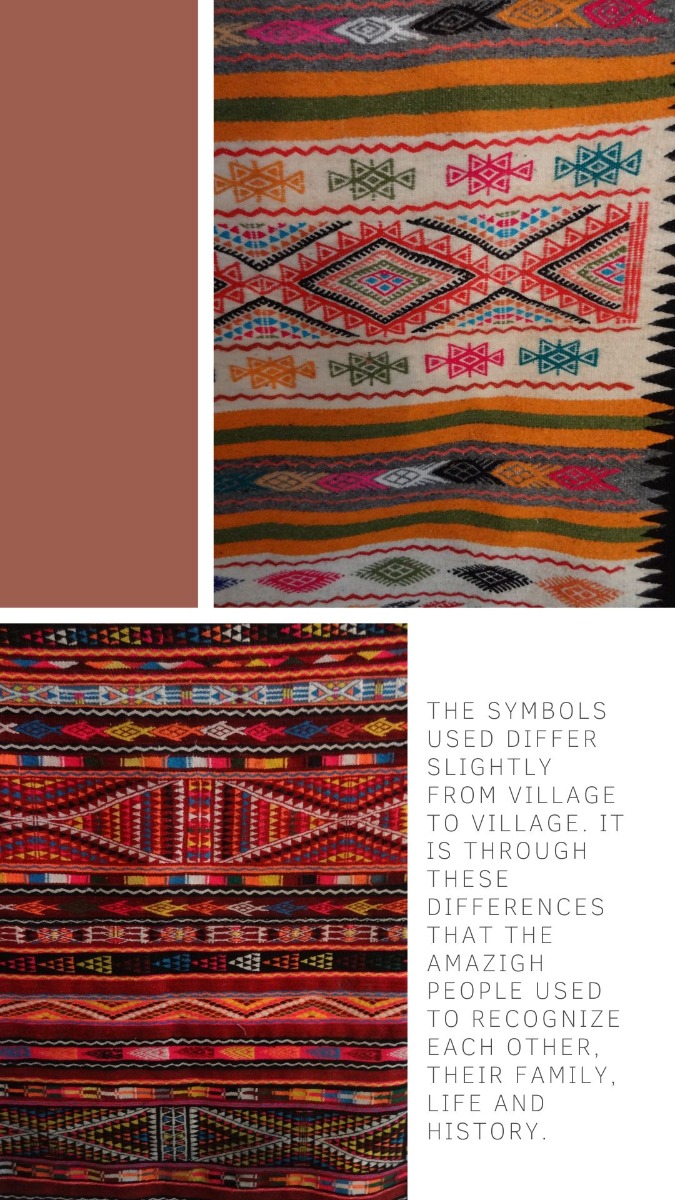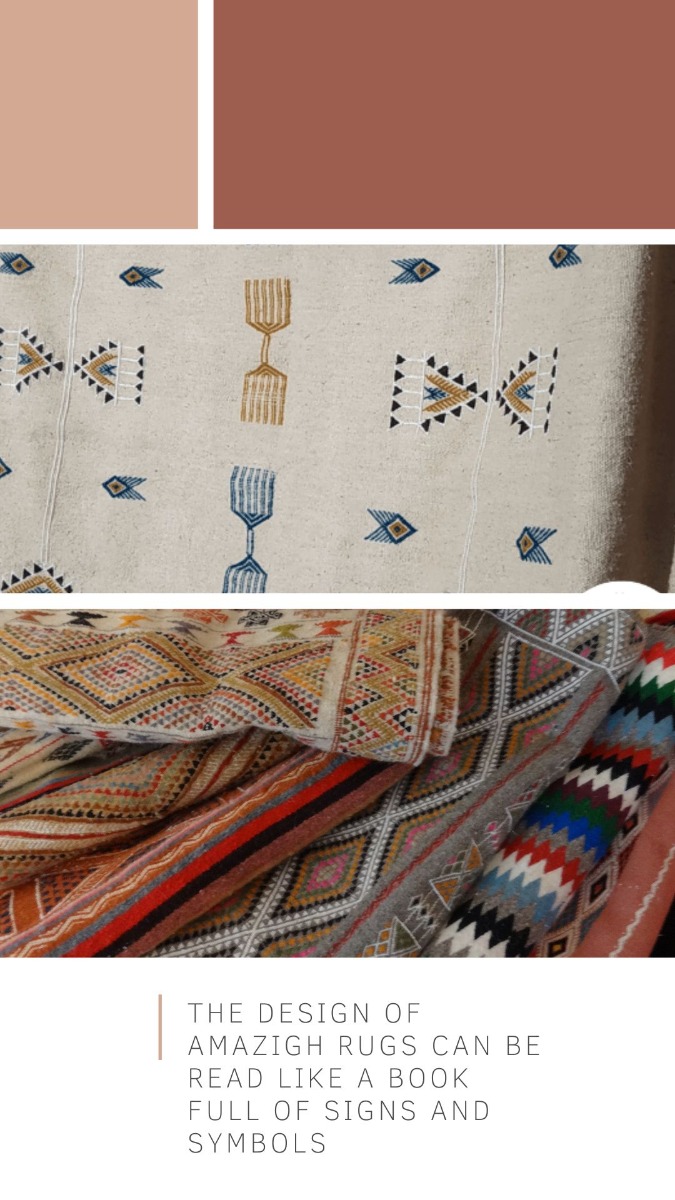
This article is part of a series about Amazigh culture and crafts. We recommend you check out our other articles on amazigh symbols in tattoos and learn about Amazigh ceramics and pottery here.
Amazigh rugs are known by their vivid and warm colors and geometric shapes, made out of handspun wool. The design of Amazigh rugs can be read like a book full of signs and symbols. It is through knowledge of these symbols the universe of the Amazigh is unveiled.
These books tell a story of a woman's life and community. In rural southern Amazigh villages in Tunisia almost every home has a loom and the tradition is passed onto younger generations, even though the know-how is declining through time.

The women that weave show a creative freedom and a surprising artistic expression in their creations with use of color and patterns that can’t be found in any other region of the world.
Traditionally rugs and decorated shawls are immensely personal items as they are gifted throughout the life of a woman and married couple. The woven or embroidered symbols add onto the story telling of the personal history of a woman or married couple, intertwined with regional symbols and magical significance.
The culture and traditions of each Amazigh community can be very different from one region to another. Thus, depending on the tribe, the carpets may have different styles, colors and weaving techniques.
Through historic research it is found that the patterns of Amazigh rugs have surprising similarities and links to artifacts from the Upper Paleolithic period in Europe and the Neolithic period in the East and in the Mediterranean basin, which explains why the Amazigh carpet can be considered as the last testimony of the archaic world.
Thus it is not surprising that the significance of the symbols is mostly lost today, even though local communities work hard at preserving their culture, often without much support from national authorities. Even the women weaving rugs often copy designs they’ve seen their mothers, aunts and grandmothers use but do not really know what the symbols mean. Without this knowledge, it is impossible to correctly define the significance of the symbols and we can only rely on oral traditions by elders or researchers to have a guess at the true meaning.

From what we do know, the origins of the symbols are to be found in the fertility of the human body, phases of a woman's life, human relations, animals, tools and most of all minimal depictions of the land and village. From my personal experience discovering the art of Amazigh rug weaving in different villages in southern Tunisia, the symbols used in both rugs and especially tattoos differ slightly from village to village. It is through these differences that the Amazigh people used to recognize each other, their family, life and history.
Since the 19th century, Amazigh rugs have become more and more accessible and popular to European and other markets. We can even say there has been an ongoing trend of “Berber” rugs in Europe and the US. They are revered for their quality, durability, history and originality. Unfortunately because of the high demand of the Amazigh rug, many multinationals have turned to production of fakes, with symbols resembling but far from original Amazigh symbolism. These products weaken the handmade market and preservation of Amazigh culture and economy. Handmade rugs are often the main providence of income for smaller villages.
At Qartaj we collaborate with strong ties to local communities, respecting the creative process of age old traditions while also providing sources to innovate their skills and production of these beautiful rugs which deserve to live on many more years.

